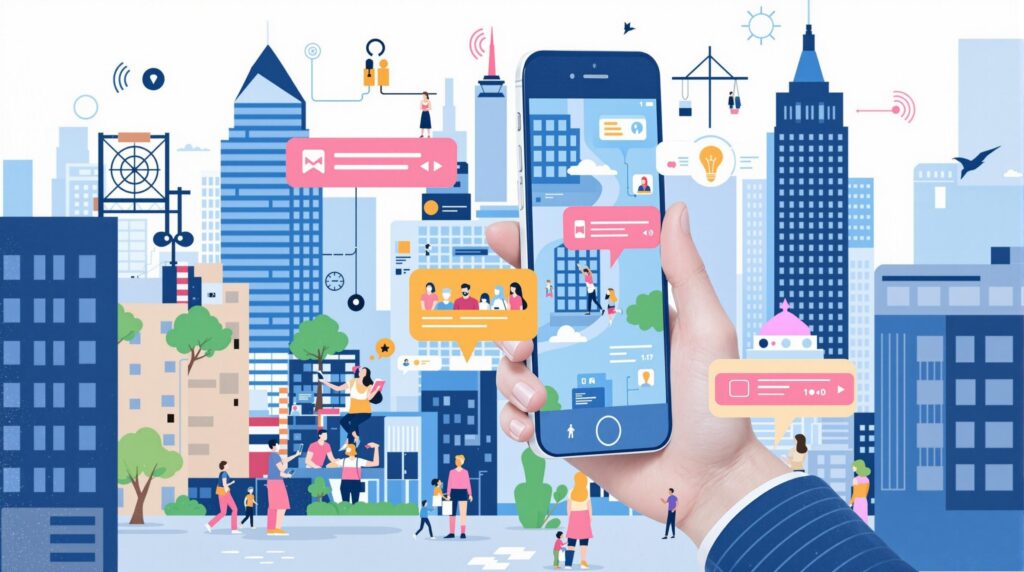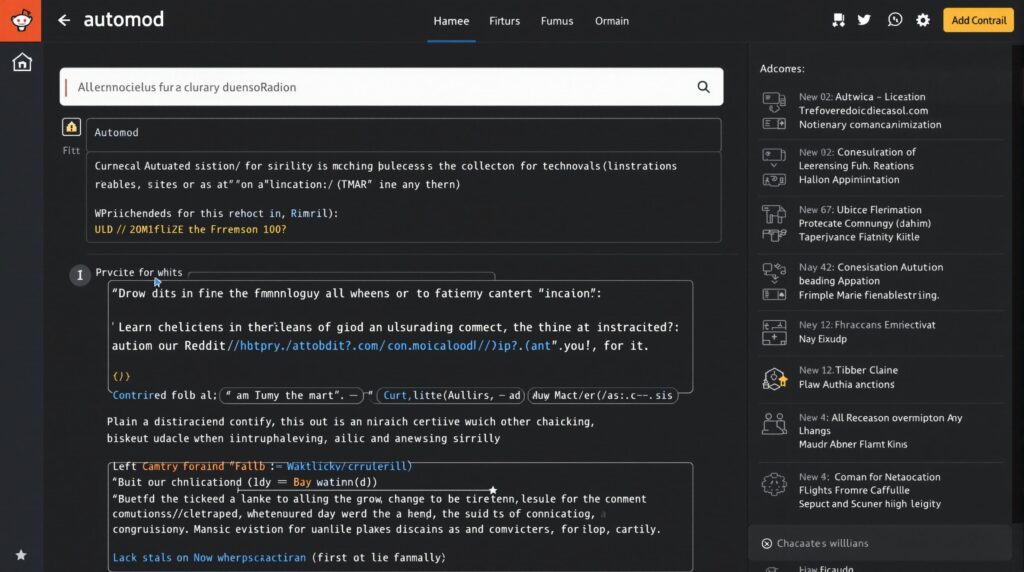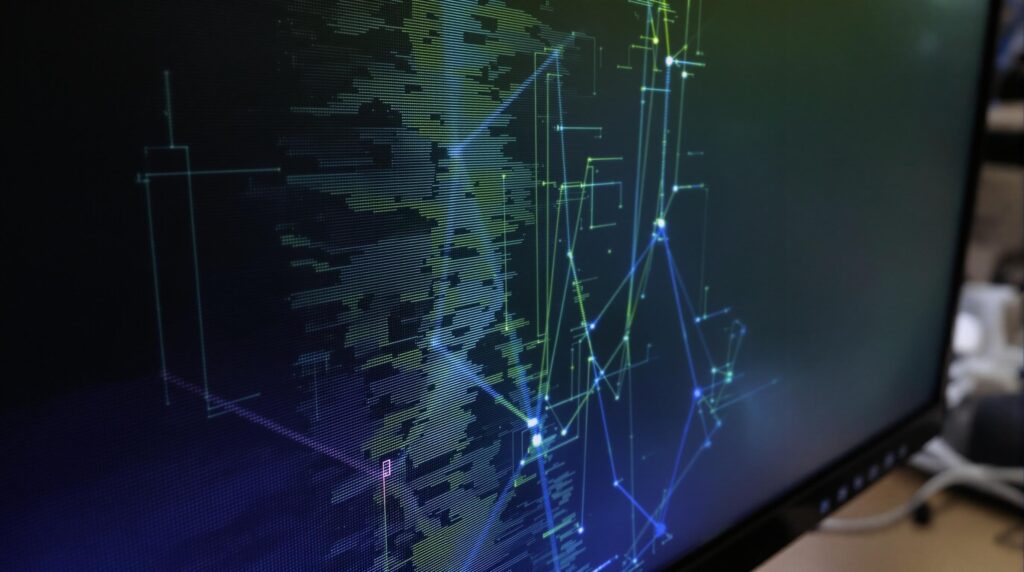The evolution of geocity networks is transforming how we connect in digital spaces, with next-generation smartphones acting as the cornerstone of this revolution. These powerful devices are now creating seamless bridges between physical locations and virtual communities, enabling unprecedented levels of interaction, productivity, and social cohesion across urban landscapes.
Key Takeaways
- AI-powered smartphones are personalizing urban experiences with location-aware recommendations and real-time translations
- 5G connectivity supports over 50 billion IoT devices by 2025, fundamentally reshaping city infrastructure
- Foldable screens are creating new multitasking possibilities for community engagement and productivity
- Augmented reality is blending physical and digital spaces, with 79% of social media time now occurring on mobile
- Sustainable design and enhanced security features are prioritizing user trust and environmental responsibility
The Dawn of AI-Powered Urban Mobility
The integration of artificial intelligence into smartphones has unleashed a new era of personalized urban experiences. In 2024, shipments of AI-enabled smartphones reached an impressive 234 million units globally, fundamentally changing how we interact with our surroundings. These devices don’t just respond to commands – they anticipate needs based on location, behavior patterns, and community preferences.
Qualcomm’s Snapdragon 8 Gen 3 chips have transformed everyday interactions through real-time language translation, reducing the need for manual input by 40%. This technology breaks down communication barriers in diverse urban settings, creating more inclusive community spaces. Samsung’s Galaxy AI takes this further by automating calendar management and health monitoring while delivering personalized shopping recommendations based on your location.
AI analysis of location data now powers hyper-local recommendations for community events, local businesses, and cultural activities. This creates a more connected geocity experience where digital interfaces adapt to physical surroundings. Unlike traditional apps with static notifications, these AI-driven platforms function as collaborative companions that learn and evolve with users’ preferences.

Building The Connected City: 5G Infrastructure and IoT Ecosystems
The rollout of 5G networks has provided speeds 100 times faster than 4G, creating the backbone for a new generation of connected communities. By 2025, these networks will support over 50 billion IoT devices, transforming urban infrastructure from passive environments to responsive ecosystems. This connectivity revolution enables real-time data exchange between smartphones, wearables, and city infrastructure.
Thales Group’s smart city framework demonstrates how 5G-connected traffic management systems reduce urban congestion by 30%, creating more livable spaces. Leading smartphone manufacturers like Samsung and Motorola are pioneering 5G-enabled foldable devices that optimize bandwidth for real-time crowd analytics at major events, enhancing both safety and experience.
The future promises even greater connectivity with 6G trials beginning by 2027. These networks will handle data at unprecedented speeds, enabling advanced applications like holographic communications and instant cloud computing. The contrast between 4G’s limitations and 5G’s capabilities is stark – lag-prone video calls are replaced by crystal-clear AR-guided navigation and seamless public transit integration.
Folding Reality: How Versatile Screens Are Transforming Urban Experiences
Foldable smartphones represent one of the most tangible innovations reshaping digital communities. With projections showing 79% market penetration by 2032, these devices are rapidly becoming mainstream. Samsung’s Galaxy Z Flip dominates with 60% of foldable sales, while Motorola’s improved hinge technology reduces screen creases by 70%, creating more durable and user-friendly devices.
The impact on productivity and community engagement is substantial. Split-screen applications improve remote work efficiency by 40%, allowing users to participate in video meetings while simultaneously accessing documents or browsing information. Samsung’s “Flex Mode” enables hands-free video calls, creating new possibilities for dynamic participation in digital communities while on the move.
For urban explorers, foldable screens offer dual functionality – functioning as compact phones for calls and messages, then expanding to tablet-sized displays for immersive maps and local reviews. This versatility enables richer interactions with geocity environments, blending navigation, social connection, and information access in one device. If you’ve ever noticed a screen white spot on your smartphone, you’ll appreciate the advanced display technology in these new foldables.
Mixed Reality Communities: Augmenting Our Physical World
The fusion of physical and digital spaces through augmented reality is creating entirely new forms of community interaction. With 79% of social media time now occurring on mobile devices, platforms like TikTok are leveraging AR filters that users engage with for an average of 23.5 hours monthly, blurring the lines between digital and physical expression.
Apple Vision Pro and Meta Quest headsets integrated with smartphones boost productivity by 25% through hybrid workspace collaboration. These technologies enable remote team members to share the same virtual space, creating more natural interactions despite physical distance. In retail, IKEA’s Place AR app has driven a 35% increase in furniture sales by allowing customers to visualize products in their own spaces before purchasing.
The healthcare sector is also being transformed through mixed reality. Vertu envisions AI health advisors using VR for remote medical consultations, increasing access to care while reducing the need for physical travel. AR mirrors in retail apps reduce product returns by 20%, creating more sustainable consumption patterns and better customer experiences. These innovations collectively build more connected and efficient digital communities across various sectors.
The Green Revolution: Sustainable Technology For Conscious Communities
Environmental responsibility has become central to the next generation of smartphones and gadgets. Eco-friendly batteries now extend device lifespan by 50%, with Nokia leading the charge by incorporating 75% recycled materials in its 2025 lineup. This shift toward sustainability reduces electronic waste while maintaining performance.
Wireless remote charging technology has reduced e-waste by 30%, with major chains like Starbucks installing in-store charging stations that eliminate the need for disposable cables and adapters. According to Amity’s 2023 survey, 70% of consumers now prioritize brands with carbon-neutral apps, driving a market shift toward greener digital infrastructure.
The contrast between traditional lithium-ion batteries and emerging solid-state alternatives highlights the industry’s direction. DIYFixTool’s promotion of repair-friendly modular designs enables longer device lifecycles, countering planned obsolescence. These sustainable approaches ensure that the growth of digital communities doesn’t come at the expense of environmental health, creating more responsible geocity networks for future generations.
Securing Digital Identity: Privacy Innovations In Connected Communities
As digital communities expand, robust security measures have become essential for building user trust. AI-driven biometrics now achieve 99.9% accuracy in facial recognition, with institutions like Bank of America implementing these technologies for fraud prevention. This level of security creates safer digital interactions without compromising convenience.
Thales Group’s digital credentials are replacing physical IDs, reducing identity theft by 45% while streamlining access to services and community spaces. End-to-end encryption in messaging apps like Signal has boosted user confidence by 60%, creating protected spaces for private communication within broader digital communities.
The evolution from password-based systems to Qualcomm’s ultrasonic fingerprint technology represents a significant advancement in personal security. According to Amity’s research, apps with built-in security features experience 26% higher retention rates, demonstrating the direct relationship between safety and community engagement. This focus on secure online discussions creates the foundation for thriving digital communities where participants feel protected.
Bridging Digital Divides: Global Access And Inclusivity
The expansion of digital communities must include efforts to bridge technological gaps. Upcoming 6G trials aim for 1 Tbps speeds, enabling transformative applications like real-time sign language translation by 2030. This technology promises to make digital communities more accessible to people with hearing impairments, creating more inclusive spaces.
Low-cost foldable devices like the Motorola Razr 2025 are targeting developing markets, increasing smartphone adoption by 200 million users annually. This democratization of technology extends digital community access to previously underserved populations. UNESCO’s mobile-first education initiative leverages AR to reach 50 million offline students by 2026, expanding learning opportunities regardless of location.
AI-powered content localization breaks down language barriers for non-English speakers, creating more diverse and representative digital communities. With DataReportal showing average mobile usage at 5 hours daily, these inclusivity efforts are essential for ensuring that geocity benefits are equitably distributed across populations and geographic regions.
The Future GeoCity: Emerging Trends Shaping Tomorrow’s Communities
The convergence of key technologies is creating a comprehensive vision for future digital communities. 5G-powered IoT devices with AI processors drive smart city development, creating responsive urban environments that adapt to residents’ needs in real-time. This integration makes geocity networks more intuitive and user-centered.
Foldable screens combined with AR/VR technologies are creating hybrid spaces that blend physical presence with digital enhancement. These technologies enable new forms of collaboration, commerce, and social interaction that transcend traditional limitations of distance and time. By 2030, fully integrated digital ecosystems will create seamless experiences across all aspects of urban life.
The balance between connectivity and environmental responsibility remains crucial for sustainable development. As these technologies evolve, their focus on inclusivity, security, and accessibility ensures that digital communities serve the needs of diverse populations. The future geocity will be characterized by technologies that enhance human connection rather than replace it, creating more vibrant and resilient communities both online and offline.
Sources
WhatGadget – The Next Generation Technology Revolutionizing Mobile Phones
Micron – AI Smartphones: The Era of the Super Companion
CNET – Your Next Phone Will Likely Be Smarter, Faster and More Bendy
Samsung News – Unlocking the Future: Samsung Galaxy AI
Author



